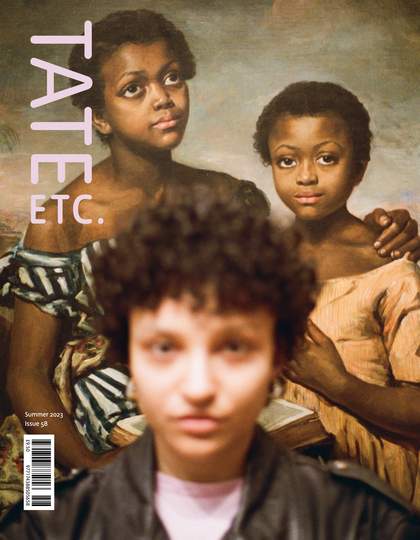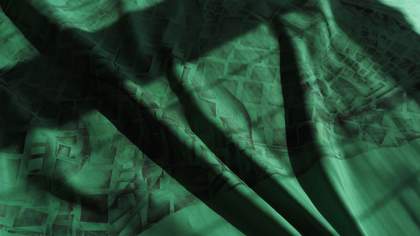
Hera Büyüktaşcıyan with her paper cut-outs and graphite drawings in Porthmeor Studios in St Ives, November 2022
Courtesy Hera Büyüktaşcıyan
TATE ETC. Walking is a big part of your practice and daily life. Did you enjoy exploring Cornwall on foot during your recent residency in St Ives?
HERA BÜYÜKTAŞCIYAN Yes, a lot. Walking helps me to discover a place, gathering different layers, surfaces and timelines as they flow around me. Your posture changes with every step on the terrain and walking is connected to the act of drawing – you walk a line and leave marks on a landscape. The earth bears and records the traces of every passer-by.
ETC. What inspired you in the landscape?
HB I was fascinated with the standing stones all around Cornwall and the legends that speak to their anthropomorphic forms. In some folk stories, maidens are turned to stone as a punishment for singing on the Sabbath. I’ve long been interested in the idea of petrification – as a process that can solidify time or silence things in the passage of time.
ETC. What did you do back in the studio?
HB When I encountered these lithic forms, it felt as if I was seeing a reflection of a self or a hidden, breathing organism. They were covered with lichens and mosses, which concealed their stone surfaces and felt almost like touching someone’s skin. I made layered paper cutouts inspired by the geological forms I’d been encountering during my walks. I then made graphite rubbings from them, first on paper and later on a water-repellent fabric.
ETC. Is this a new material for you?
HB It is. I noticed graphite marks on a green coat I had worn and the texture seemed beautiful, so I tried drawing on it. The material is like a shell that protects you from the outside, and it conceals things, dividing the seen and the unseen – an element that resurfaces in my art through the exploration of personal and social histories. For Tate St Ives, I’m making a series of layered standing forms using this fabric, which people can meander among.
ETC. Hidden histories lie at the core of your work. What stories did you mine in St Ives?
HB Looking into the textile history of St Ives unfolded many stories of silence and womanhood. The women who worked for the Cryséde silk company made garments printed with abstractions of the Cornish landscape. During the Second World War, the factory was used to make camouflage nets to protect civilian buildings. The female workers there were reportedly not allowed to speak while working, only sing. I saw a parallel between the silence of these women and the stone maidens, and the act of creating obscure landscapes and becoming an embodiment of it.
ETC. Has the residency left a mark?
HB It definitely has. Working on a larger scale has allowed me to rediscover my connection with drawing and surface.
Hera Büyüktaşcıyan: Earthbound Whisperers, Tate St Ives, until 15 October. Commissioned by Tate St Ives and the 14th Gwangju Biennale. Supported by SAHA –Supporting Contemporary Art from Turkey.
Hera Büyüktaşcıyan is an artist based in Istanbul. To go on a walk through the city with the artist, filmed in December 2022, visit www.tate.org.uk/hera-film.




